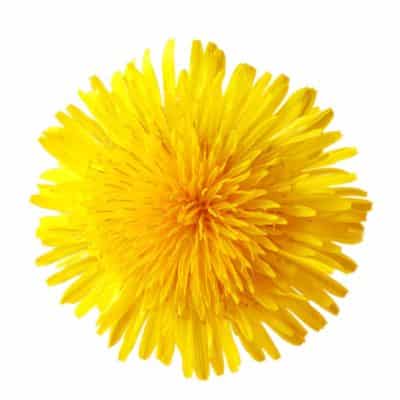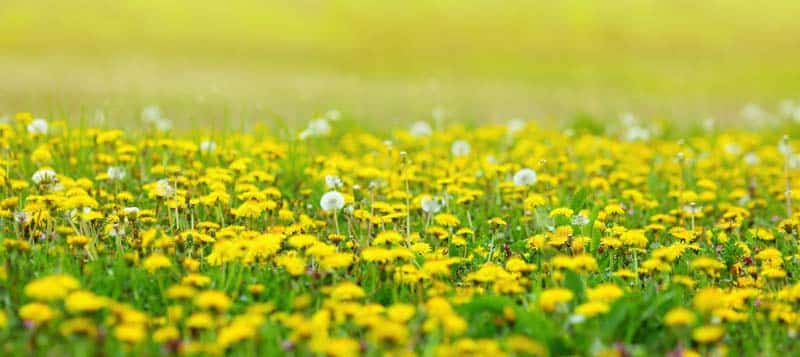By John Spagnoli
Masters of survival: Dandelions. The king of weeds is a harmless golden lion’s mane, so, why do we pollute our soil and water to hunt it down and kill it?
Fast-growing, the pretty yellow fuzz ball blocks sun from reaching other plants including grass. It is a plant that thrives in undesirable locations, that makes it a weed. While competing with other plants, weeds reseed easily. Germination rate is high, so dandelions spread over the whole lawn.
The seed head can have 100 or more seeds. Blowing the cloud-like dandelion seeds is a favorite childhood past-time that enables seeds to travel for many miles. Its perfect transport design resembles a tiny hang-glider traveling on the wind high in the sky.
The size and prosperity of these plants is dictated by the environment. In a lawn, dandelions typically creep close to the ground. This protects plants and flowers while taller stalks get razed when you mow your lawn. Over the decades, dandelions have cross-pollinated with other varieties of dandelion to develop new types that are ever more resilient.
 So, how can you stop dandelions without herbicides? Grow zoysia grass. Its runners quickly fill in spaces and grows so thick that dandelions cannot grow, nor can their seeds germinate. Zoysia has wide leaves that further block photosynthesis of dandelions and other weeds. Do not spray with pesticides as it will kill zoysia. After establishing your zoysia lawn, it will look lush with virtually no weeds.
So, how can you stop dandelions without herbicides? Grow zoysia grass. Its runners quickly fill in spaces and grows so thick that dandelions cannot grow, nor can their seeds germinate. Zoysia has wide leaves that further block photosynthesis of dandelions and other weeds. Do not spray with pesticides as it will kill zoysia. After establishing your zoysia lawn, it will look lush with virtually no weeds.
Or, remove dandelions with a weed zinger. Ask your local nursery and review the options, as pulling by hand is often not successful given the long root.
So where did the dandelion originate?
In the 1600s, the dandelion was introduced to North America and Canada by French settlers. In the 1500s, Spanish monks helped spread the dandelion to the east and west coasts and rapidly, the seeds seeded in between.
In the early 19th century and even earlier, people foraged for fresh dandelion leaves. After a long winter, edible green leaves were eagerly eaten where winters were harsh and vegetables unavailable. Its leaves provide important vitamins like vitamin C and A, iron and calcium. All parts of the plant are used. Dandelion flower wine was once popular along with a tea made from the leaves and root. Nowadays, dandelion supplements composed of the leaves and root, a diuretic, are found in health food stores and are said to cleanse kidneys and the liver.
If you’re in love with these yellow flowers, you’re not alone. Its flower produces nectar for birds, butterflies and honey bees, all of which help to pollinate the flowers.
Throughout history, this plant has proven very useful. Whether consumed or simply admired for its shaggy mane and delightful seed clouds, the dandelion is here to stay. You decide if this master of survival is really a weed.




















